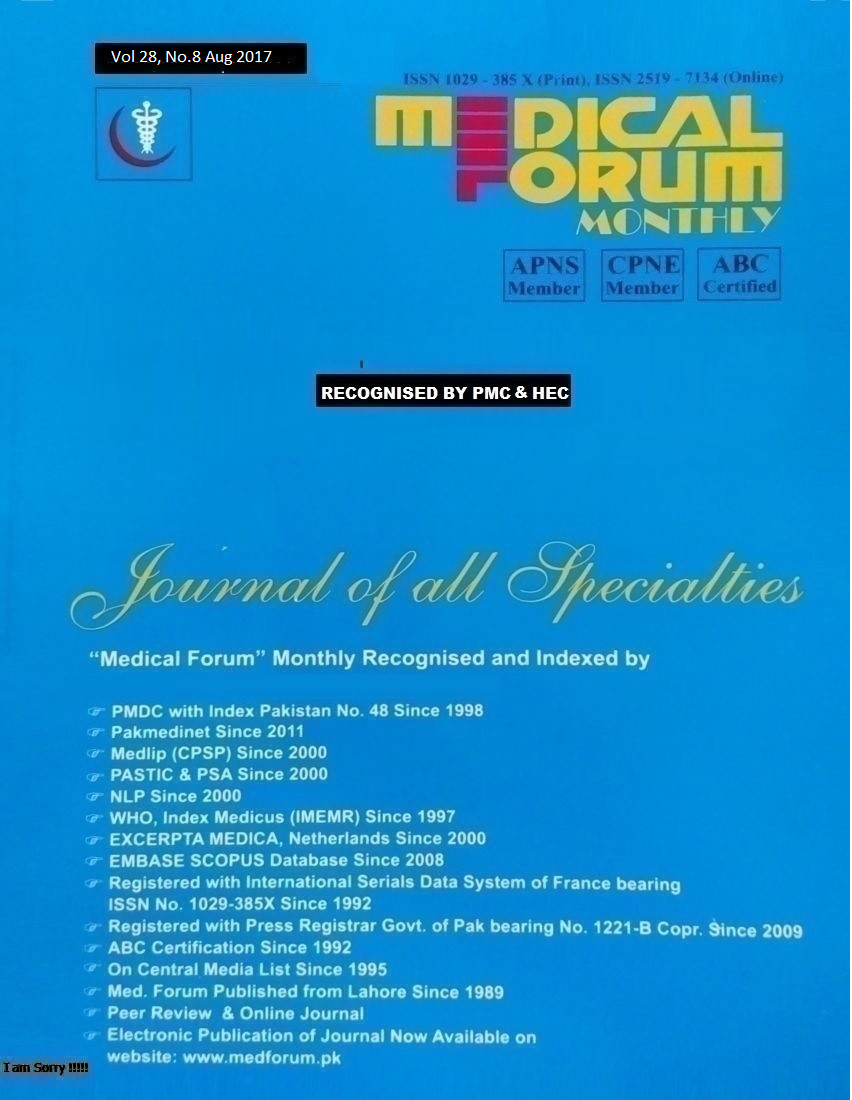
14. Diagnostic Utility of FNAC and Pathological Profile of Head and Neck Lesions
Nazar Muhammad Afridi1, Mohammad Umar Shah2, Syed Irfan Raza Arif3, Muhammad Usman Anjum4 and Arshad Wahab Shah5
ABSTRACT
Objective: To study the diagnostic yield of FNAC when compared with histopathology and to determine the pathological spectrum of head and neck lesions in our region. Study Design: Cross-sectional study
Place and Duration of study: This study was conducted at the Department of Pathology, Frontier Medical & Dental College, Abbottabad from January 2016 to April 2017,
Materials and Methods: A total of 150 patients with superficial and palpable head & neck swelling underwent fine needle aspiration and cytology using standard protocol.
Results: Out of 150 patients, there were 84 males and 66 females with male to female ratio of 1.27:1. Mean age was 35±17.42 years. Most of the patients, 77.33%, were between the ages of 21-60 years. As per the site of involvement, most of the lesions, 40%, occurred in lymph nodes followed by salivary glands, 30% cases, and cystic, soft and other tissues, 30% cases. The most common benign lesion involving lym h n des was tuberculosis while most common malignant lesion involving lymph nodes was metastatic dep sits to lymph nodes. In case of salivary glands, the most common benign lesion was pleomorphic adenoma while m st common malignant lesion was mucoepidermoid carcinoma. Among benign lesions, lipoma was observed in majority of cases involving cystic, soft and other tissues while among malignant lesions, metastatic squamous cell carcinoma was most common. When compared to histopathology, the overall sensitivity and spe f ty of FNAC was 73% and 93% in the diagnosis of head and neck lesions. In case of salivary gland les ons, sens t vity and specificity of FNAC was 65% and 89% while it was 72% and 95% in case of lymph node les o s a d 84% and 100% respectively in case of cystic, soft tissue and other tissue lesions.
Conclusion: Head and neck region encompasses a diversified range of diseases ranging from inflammatory to malignant ones. Accurate diagnosis of these lesi ns is very important for their successful treatment. FNAC is a safe, reliable, convenient and minimally invasive p cedure which can be done on out-patient basis. It provides accurate information in most cases which in urn helps in making treatment decisions as it ascertains the type of lesion. Key Words: Salivary gland, Head and ne k, FNAC
Citation of articles: Afridi NM, Shah MU, Arif SIR, Anjum MU, Shah AW.. Diagnostic Utility of FNAC and Pathological Profile of Head and N k Lesions. Med Forum 2017;28(8):51-54.
